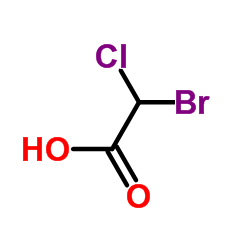keratin

keratin structure
|
Common Name | keratin | ||
|---|---|---|---|---|
| CAS Number | 68238-35-7 | Molecular Weight | 173.393 | |
| Density | 2.1±0.1 g/cm3 | Boiling Point | 214.8±20.0 °C at 760 mmHg | |
| Molecular Formula | C2H2BrClO2 | Melting Point | N/A | |
| MSDS | USA | Flash Point | 83.7±21.8 °C | |
|
Rejoining of cut wounds by engineered gelatin-keratin glue.
Biochim. Biophys. Acta 1830(8) , 4030-9, (2013) Rejoining of cut tissue ends of a critical site challenges clinicians. The toxicity, antigenicity, low adhesive strength, flexibility, swelling and cost of the currently employed glue demands an alternative. Engineered gelatin-keratin glue (EGK-glue) describe... |
|
|
New therapeutic strategy for hepatocellular carcinoma by molecular targeting agents via inhibition of cellular stress defense mechanisms.
J. UOEH 36(4) , 229-35, (2014) The prognosis of advanced hepatocellular carcinoma (HCC) has remained very poor.It has recently been reported that the molecular targeting agent sorafenib can improve the prognosis of patients with advanced HCC. However, the detailed mechanisms of sorafenib, ... |
|
|
Keratocystic odontogenic tumor. Case report and review of the literature.
N. Y. State Dent. J. 79(2) , 44-7, (2013) Keratocystic odontogenic tumor is an intraosseous benign tumor of epithelial origin that can appear as a unicystic or multicystic lesion. It is characterized most significantly by its high recurrence rate. This is why surgical removal is the chosen therapeuti... |
|
|
SpyAD, a moonlighting protein of group A Streptococcus contributing to bacterial division and host cell adhesion.
Infect. Immun. 82(7) , 2890-901, (2014) Group A streptococcus (GAS) is a human pathogen causing a wide repertoire of mild and severe diseases for which no vaccine is yet available. We recently reported the identification of three protein antigens that in combination conferred wide protection agains... |
|
|
A pilot study for preoperative concurrent chemoradiotherapy with S-1 and cisplatin for locally advanced gastric cancer.
Hepatogastroenterology. 60(122) , 382-6, (2013) This study aims to determine the feasibility and effectiveness of concurrent chemoradiotherapy with the combination of S-1 and cisplatin in locally advanced gastric cancer.Treatment-naive patients with locally advanced gastric cancer were enrolled. The patien... |
|
|
Clinical outcome with correlation to disseminated tumor cell (DTC) status after DTC-guided secondary adjuvant treatment with docetaxel in early breast cancer.
J. Clin. Oncol. 32(34) , 3848-57, (2014) The presence of disseminated tumor cells (DTCs) in bone marrow (BM) predicts survival in early breast cancer. This study explores the use of DTCs for identification of patients insufficiently treated with adjuvant therapy so they can be offered secondary adju... |
|
|
The similarity between human embryonic stem cell-derived epithelial cells and ameloblast-lineage cells.
Int. J. Oral Sci. 5(1) , 1-6, (2013) This study aimed to compare epithelial cells derived from human embryonic stem cells (hESCs) to human ameloblast-lineage cells (ALCs), as a way to determine their potential use as a cell source for ameloblast regeneration. Induced by various concentrations of... |
|
|
FAK is required for tension-dependent organization of collective cell movements in Xenopus mesendoderm.
Dev. Biol. 394(2) , 340-56, (2014) Collective cell movements are integral to biological processes such as embryonic development and wound healing and also have a prominent role in some metastatic cancers. In migrating Xenopus mesendoderm, traction forces are generated by cells through integrin... |
|
|
Covalent binding of the organophosphorus agent FP-biotin to tyrosine in eight proteins that have no active site serine.
Chem. Biol. Interact. 180 , 492-8, (2009) Organophosphorus (OP) esters are known to bind covalently to the active site serine of enzymes in the serine hydrolase family. It was a surprise to find that proteins with no active site serine are also covalently modified by OP. The binding site in albumin, ... |
|
|
Extragenital lichen sclerosus: clinical, dermoscopic, confocal microscopy and histologic correlations.
J. Am. Acad. Dermatol. 72(1 Suppl) , S50-2, (2015)
|